
James J. Rakowski, a professor emeritus of economics remembered for his sharp, analytical mind — and by students in particular as “The Rack,” a tough but fair guide to the discipline — died January 23. He was 80.
Born in Omaha, Nebraska, on December 7, 1941, the day Pearl Harbor was bombed by Japanese warplanes, Rakowski earned a bachelor’s degree at Creighton University, attended the University of Bonn, Germany, as a Woodrow Wilson Fellow and earned his doctorate in economics from the University of Minnesota. He joined the Notre Dame faculty in 1967 and taught here for 43 years, retiring in 2010. Through a faculty exchange program, he spent two years teaching in Kenya and Tanzania in the 1970s.
Professor Emeritus Kwan Kim, a longtime colleague and friend, said Rakowski was a model teacher who was especially generous with his time in office hours. His life and work demonstrated a strong commitment to Catholic ideals of social justice.
Rakowski enjoyed family life at his home in rural Marshall County, Indiana. A railroad enthusiast who could identify vintage locomotives on sight, he also enjoyed gardening, birdwatching and bicycling. For years he raised beef cattle in his home pasture, a few at a time; each animal was given a name by the family.
He is survived by his wife, Catherine, and their six children.
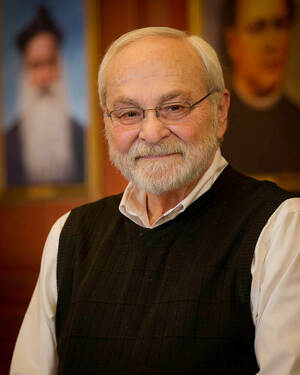
Louis Berzai was a strong advocate of the notion of “computing for good.” He was studying the ethical implications of technology years before most people owned personal computers.
A professor in the College of Arts and Letters until his retirement in 2013, Berzai served many years as assistant director of the Computer Applications Program, a supplementary major tailored to liberal arts students. He advised as many as 500 undergraduates in the program each year. It was common to see a line of students outside his office while hundreds of emails queued up in his mailbox — and he responded to them all, said Charles Crowell, a professor emeritus of psychology.
Berzai was born and raised in the South Bend area and lost his mother and three sisters in a car-train collision when he was 15. The tragedy made evident his resilient nature. He earned bachelor’s and master’s degrees at Indiana University South Bend and worked in information technology before joining the Notre Dame faculty in 1984.
In his teaching and advising, Berzai emphasized the ethical implications of computing. Recognizing that the technology could be used for harm as well as good, he wanted to prepare students to make ethical decisions while often providing them real-world work experiences and opportunities to apply their skills around campus.
An enthusiastic Notre Dame basketball fan who enjoyed traveling to Hawaii, Berzai was a regular member of the Algonquin Round Table, a longstanding group of male faculty and staff members who gathered daily for lunch at the University Club and, later, Legends of Notre Dame.
Berzai died January 10 at age 81. He is survived by his wife, Carolyn, and three daughters.
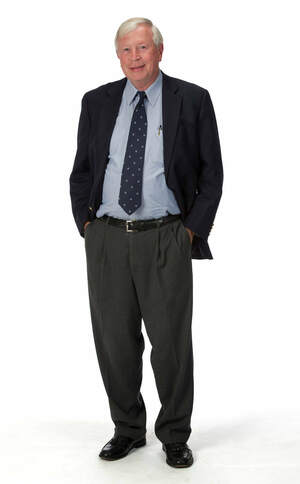
John W. Stamper’s research and writing as an architectural historian spanned the ages. His doctoral dissertation examined the planning and development of Chicago’s North Michigan Avenue in the early 20th century, and in 2005 he published a book about Roman temples.
Stamper, an associate dean and professor in the School of Architecture, died January 5. He was 71.
His steady, dependable demeanor was a calming influence and “a mark of his leadership style,” said Dennis Doordan, a professor emeritus of architecture.
Stamper grew up on a farm near Granger, Indiana, earned bachelor’s and master’s degrees in architecture from the University of Illinois and continued his graduate studies in art history at Williams College and the Clark Art Institute. After working as an architect in South Bend and Chicago, he received his doctorate in art history from Northwestern University.
Stamper taught architectural history and studio design at Notre Dame, where he joined the faculty in 1984. “Every architecture student at Notre Dame spent time with John Stamper, learning about architecture and also about life,” Doordan said. The third year of the school’s five-year undergraduate curriculum takes them to Rome, a program Stamper directed from 1990 to ’99. He considered it the most memorable experience of his life.
Back at Notre Dame, he earned honors for his teaching and later joined Rev. Theodore M. Hesburgh, CSC, in narrating a video that explains the history and artistic elements of the famous “Word of Life” mosaic on the south face of the Hesburgh Library.
Stamper enjoyed travel, museums, photography and collecting art and antiques. An enthusiastic hoops fan, he was a regular presence at Notre Dame women’s basketball games.
He is survived by his wife, Erika, and their daughter.
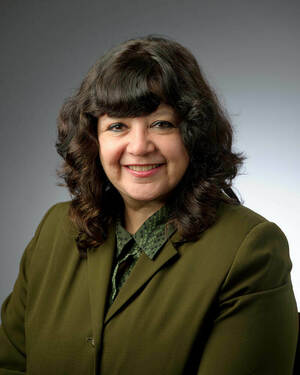
Carmen-Helena Téllez wasn’t a traditional musician: Her work as a producer, conductor and composer often incorporated elements ranging from video and dance to lighting and dramatic, multilevel staging.
She involved her students in crafting those performances. Her goal was to help them — and their audiences — look at the performing arts in a new way, said Nancy Menk, the Mary Lou and Judd Leighton Chair of Music at Saint Mary’s College and adjunct professor of music at Notre Dame.
Téllez, a professor in Notre Dame’s Department of Music since 2012, led the Graduate Conducting Studio and built the doctoral curriculum in choral conducting for the Sacred Music Program. She died December 10 at age 66.
A beloved mentor with an outgoing personality and a lively sense of humor, Téllez kept in touch with former students long after they completed their degrees. “She was very dedicated to her students, and they were very dedicated to her,” Menk said.
Born in Caracas, Venezuela, where she completed conservatory studies in piano and composition, Téllez earned her doctorate at Indiana University in 1989 and won the American Choral Directors Association’s Julius Herford Dissertation Prize.
Professionally, she conducted in the United States, Europe, Israel and Latin America. After her tenure as music director of the National Chorus of Spain, she joined the faculty at IU as director of the Latin American Music Center and the Contemporary Vocal Ensemble.
Téllez explored the work of women and Latin American artists with her performances of contemporary music for chorus, orchestra and opera. She commissioned and recorded several new works, produced 14 albums of Latin American music and organized the Inter-American Composition Workshops.
The South Bend Symphony Orchestra premiered her most recent work, “A Dance for Seurat,” during a January performance at the University’s DeBartolo Performing Arts Center that was dedicated to her memory.
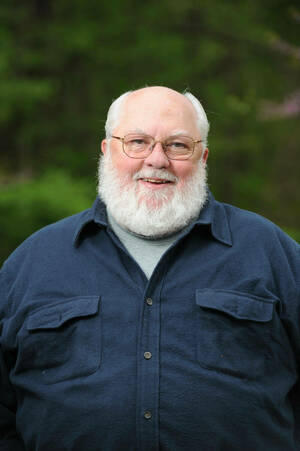
Jim Bellis was a nimble, folksy storyteller whose wise-cracking good humor and jovial presence could fill a room. The associate professor of anthropology often deployed his tales to poke fun at human nature and offer fresh insights into common social behaviors. Always good natured and amused by the world around him, he was a popular teacher whose classroom skills twice earned him prestigious University awards.
A proud graduate of Jeffersonville High School at the southernmost tip of Indiana, James Oren Bellis earned bachelor’s, master’s and doctoral degrees from Indiana University. He specialized in the art and archeology of West Africa, and his field research in Ghana was supported by the Ford Foundation and the U.S. government. He was a member of the Notre Dame faculty for almost 40 years, retiring from teaching in 2008. During that time, he directed the African studies program, established an archeological field school and chaired the Department of Anthropology. His scholarship, expertise and enthusiasm infused the campus with an appreciation for diverse expressions of art and culture and brought greater understanding to the human story.
Bellis played clawhammer banjo and easily drew smiling listeners into lively singalongs at area watering holes — or while entertaining at home with his wife, Marilyn. When they moved from their house just south of campus to a roomier setting near the St. Joseph River, Bellis bought a goat to keep the grass short and added a donkey from the American Southwest. A lover of the outdoors and Minnesota’s Boundary Waters, he and colleagues made regular trips there, with Bellis’ homemade brisket providing protein around the campfire.
Bellis reveled in learning, teaching and conversations on any topic. Once, when hosting a social gathering at his home, he joined a circle of older, retired men by playfully observing, “This looks like the place where the silverbacks hang out together,” a reference to the male elders in a community of gorillas, likewise gray and aging.
Bellis died in December 2021 after a battle with dementia, less than two months after his wife passed away. He was 83.
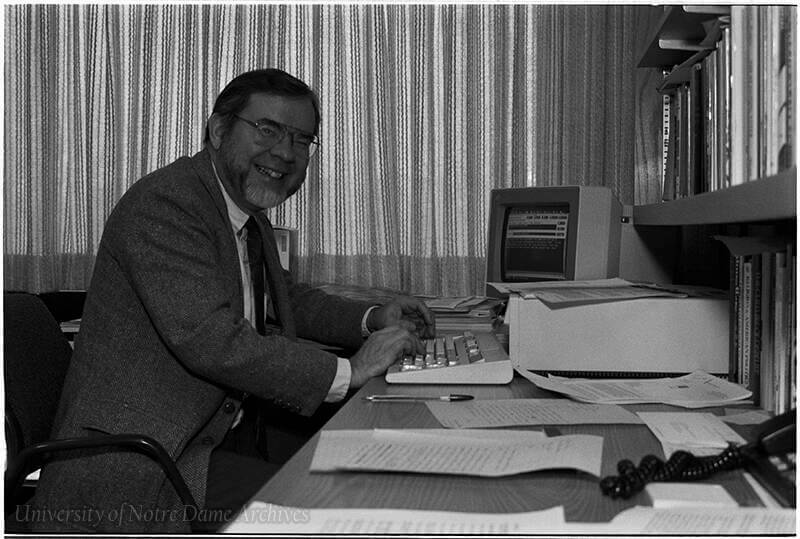
David C. Leege arrived at Notre Dame in 1976, a major hire for the political science department as a leading scholar of American voting behavior, religion and the politics of cultural difference with extensive experience in quantitative research.
He soon became an important figure in the graduate program and in the department’s rise to prominence as a center for the study of religion and politics, Professor Emeritus Peri Arnold said.
Leege taught at Notre Dame until his retirement in 2003. He died November 20 at age 84.
In the early 1980s Leege and others conducted the Notre Dame Study of Catholic Parish Life, which analyzed the characteristics of parishes in the United States two decades after the reforms of the Second Vatican Council. The report documented the increasing role of the laity in decision-making, growing diversity in parish communities, the declining number of parochial schools and the migration of American Catholics to the West and Southwest.
Born in Elkhart, Indiana, Leege earned a bachelor’s degree in political science from Valparaiso University and his doctorate from Indiana University. Before joining Notre Dame, he served as a program director at the National Science Foundation and created its American National Election Studies, still a primary data resource for understanding the opinions and choices of U.S. voters.
A supportive mentor to students and junior colleagues, he was a dependable writer of meticulously crafted letters of recommendation who also authored more than 15 books.
At home, Leege enjoyed listening to music across a variety of styles, including liturgical, classical and jazz. As a devout Lutheran, he spent parts of more than 50 summers at Camp Arcadia, a church-based family resort on the shores of Lake Michigan. He is survived by his wife of 58 years, Patricia, and their three children.
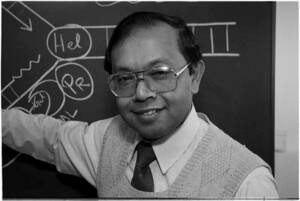
Subhash Chandra Basu maintained his reputation as a tenacious scientist even after formally retiring from the Notre Dame faculty in 2009. The professor emeritus of chemistry and biochemistry continued to edit a number of international research journals and founded the Cancer Drug Discovery Research Foundation to continue his study of potential therapies. In 2012, he went on a speaking tour of India to present his research on potential anti-cancer drugs.
“Subhash was the consummate scientist. He was fully dedicated to research and very single-minded in that regard,” said Anthony Serianni, a professor of chemistry and biochemistry.
Basu, who died November 15 at age 83, came to Notre Dame in 1970. A native of Kolkata, India, he studied at Calcutta University and the University of Michigan, receiving his postdoctoral training at Johns Hopkins University.
At Notre Dame, he worked side by side in the laboratory with his wife and research partner, Professor Emerita Manju Basu. His primary research interest was to understand how glycolipids — fats attached to sugar molecules — are synthesized and regulated in different types of cells and tissues. His work provided basic knowledge for the treatment of ailments including Parkinson’s disease and various cancers. “You could not deflate Subhash. He would never give up,” Serianni said.
Basu mentored more than 170 young scientists during his career: doctoral students, postdoctoral fellows, visiting scholars and undergraduates who aspired to work in the field. He received numerous prestigious honors and was a fellow of the American Association for the Advancement of Science. In 2015, he received an NRI of the Year award, which celebrates the successes of nonresident Indians around the world. He traveled widely and enjoyed sharing his love of Bengali music, literature and poetry. He is survived by his wife and their two sons.